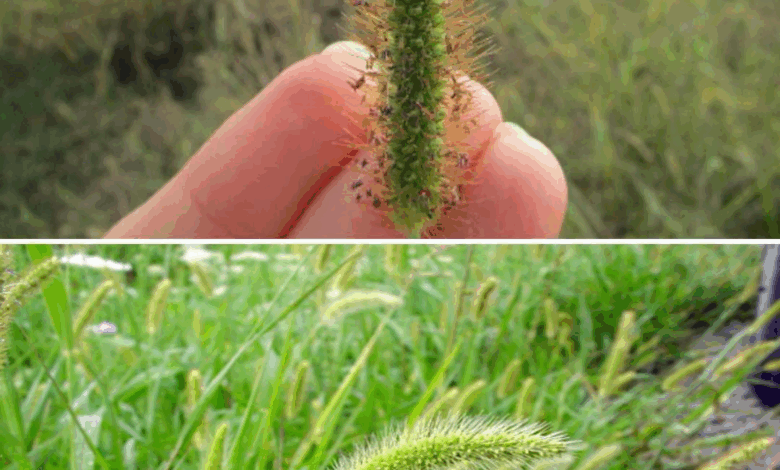The Benefits and Uses of Foxtail Grass

Foxtail grass (Setaria genus) might appear as an ordinary weed in agricultural fields, but this plant has a wealth of benefits and uses across health, agriculture, and the environment. Its versatility in traditional medicine, culinary applications, and farming makes it a hidden gem worth exploring.
Health and Medicinal Benefits
Rich in Nutrients
Foxtail grass seeds are nutrient-dense, containing carbohydrates, proteins, and dietary fiber. They are also rich in essential minerals like magnesium, phosphorus, and iron, contributing to overall health and well-being.
Supports Digestive Health
The high fiber content in foxtail grass seeds aids in regulating bowel movements, preventing constipation, and promoting gut health. It’s an excellent choice for maintaining a healthy digestive system.
Helps Manage Blood Sugar Levels
Foxtail millet, derived from foxtail grass seeds, has a low glycemic index, making it ideal for individuals with diabetes or those managing blood sugar levels.
Promotes Heart Health
Minerals like magnesium and potassium in foxtail grass seeds support heart health by regulating blood pressure and reducing cardiovascular risks. Additionally, its fiber content helps lower cholesterol levels, contributing to better heart function.
Anti-inflammatory Properties
Traditional medicine often uses foxtail grass for its anti-inflammatory effects. It’s believed to reduce inflammation, providing relief from conditions such as arthritis and other inflammatory diseases.
Agricultural and Environmental Benefits
Fodder for Livestock
Foxtail grass serves as excellent fodder for cattle, goats, and other livestock. Its rich nutrient profile supports animal health, making it valuable for farmers.
Prevents Soil Erosion
The dense root system of foxtail grass stabilizes soil, preventing erosion caused by water or wind. This makes it a critical resource in erosion-prone areas.
Cover Crop
In farming, foxtail grass is often used as a cover crop. It helps maintain soil fertility, moisture, and structure while adding organic matter when plowed back into the soil.
Culinary Uses
Foxtail Millet
Widely consumed in Asia and Africa, foxtail millet is gluten-free, making it a suitable alternative for individuals with gluten intolerance. It’s used in various dishes like porridges, pilafs, and flatbreads, offering both taste and nutrition.
Nutritional Supplements
Foxtail millet flour is often included in health supplements due to its high nutrient content. It can be added to baked goods, smoothies, or health bars for an extra boost of energy and nutrition.
Other Uses
Traditional Medicine
In some cultures, foxtail grass is used to treat ailments such as fever, skin infections, and respiratory issues. While its effectiveness is noted in traditional medicine, scientific research is still limited, and caution is advised when using it for these purposes.
Wildlife Habitat
Foxtail grass provides food and shelter for wildlife, including birds and small mammals. Birds often feed on its seeds, while its dense growth offers a safe habitat for various species.
Precautions
While foxtail grass has many advantages, its seeds can pose risks to pets like dogs and cats. The barbed seeds can stick to fur or penetrate the skin, causing irritation or infection. Care should be taken when pets roam in areas with foxtail grass.
Conclusion
Often dismissed as a common weed, foxtail grass holds immense value in health, agriculture, and environmental contexts. From its nutritious seeds and medicinal potential to its role in preventing soil erosion and supporting wildlife, this versatile plant is a hidden treasure. By appreciating its benefits and using it responsibly, foxtail grass can become a valuable part of both ecosystems and daily life.





